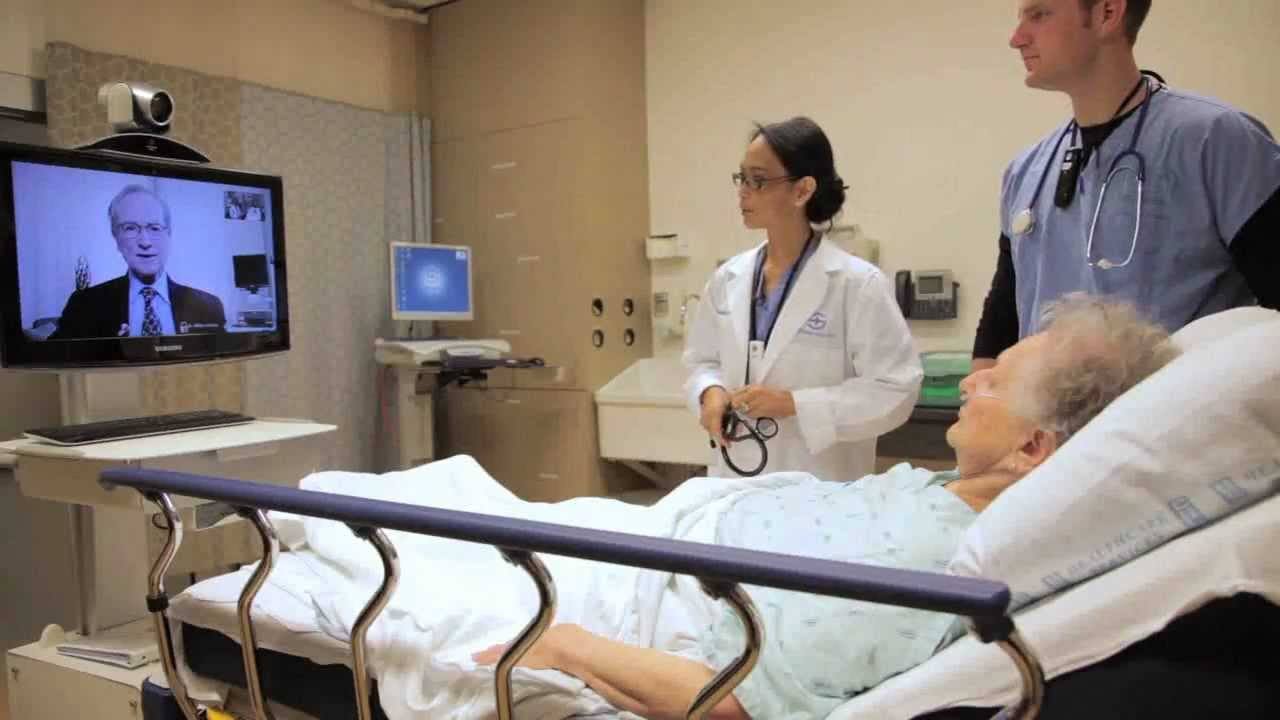Telestroke services utilize telemedicine technology to connect stroke patients at rural or community hospitals to stroke specialists at comprehensive stroke centers hundreds or even thousands of miles away. Through real-time audio and video connections, stroke specialists can evaluate patients, recommend treatment, and provide ongoing care and support remotely. This allows patients in remote areas rapid access to specialized stroke expertise that may not otherwise be available locally.
How Do Telestroke Consultations Work?
When a patient experiencing signs of an acute stroke arrives at an emergency department that is not a certified stroke center, the on-site medical team will quickly perform a neurological evaluation and scan tests like a CT scan or MRI to identify any bleeding or blockages in the brain. They will then contact the on-call telestroke specialist, typically a neurologist who specializes in treating stroke, through a secure video link.
The Telestroke Services specialist is able to view and discuss scan results in real-time with the local medical team. They will evaluate the patient’s symptoms and medical history to determine if the signs indicate an emergent need for clot-busting treatment or other interventions. Through two-way audio and video, the specialist can examine the patient, ask questions, and request additional tests.
Based on their expertise, the telestroke specialist can recommend an treatment plan and confirm the most appropriate facility for receiving the specialized care the patient requires. For some patients, this may involve transferring them via ambulance to the nearest certified stroke center for procedures like a thrombectomy to remove the clot causing the stroke. For others, treatment may be able to occur locally under the telestroke specialist’s guidance and support.
Benefits of Telestroke Services
Rapid access to stroke expertise: Telestroke consultations allow local hospitals to obtain neurological evaluations and recommendations from stroke specialists much faster than waiting for a specialist to travel long distances to see the patient in person. This can shave valuable time off treatment windows for interventions like clot-busting drugs.
Improved outcomes: Numerous studies have found telestroke significantly improves outcomes for acute stroke patients in rural areas. Faster treatment times due to rapid remote consultations translates to higher rates of functional independence and reduced disability after a stroke.
Reduced transfers: In many cases, the telestroke specialist is able to advise treatment locally rather than a lengthy ambulance transfer, reducing time to treatment initiation even further. This is more convenient for patients and families as well as reducing costs.
Ongoing care support: Telestroke programs offer round-the-clock access to stroke expertise, allowing specialists to continue monitoring patients even after initial treatment and providing ongoing guidance to local medical teams caring for stroke survivors.
Expanded coverage: Telestroke fills gaps in access to specialized stroke care for residents in remote or underserved areas without local comprehensive stroke centers. It allows smaller community hospitals to provide advanced stroke treatment capabilities they may otherwise lack.
Evidence of Telestroke’s Effectiveness
Extensive research has demonstrated telestroke vastly improves outcomes for stroke patients in rural hospitals. Some key findings from telestroke studies include:
– A systematic review of 31 studies found telestroke resulted in higher rates of thrombolysis (clot-busting drugs) for stroke patients compared to usual care without telemedicine access.
– An analysis of over 4,000 telestroke patients found significantly higher rates of excellent functional outcomes at 90 days versus similar patients treated at local facilities without telestroke support.
– A study across 25 rural emergency departments participating in a statewide telestroke network showed patients were 47% more likely to be discharged home rather than to a skilled nursing facility or rehabilitation center.
– An examination of telestroke at 38 rural hospitals found it increased the percentage of patients receiving thrombolysis from 5.4% to 15.6% compared to before the program began. Rates were equivalent to urban stroke centers.
– A meta-analysis concluded that telestroke patients had a higher likelihood of minimal or no disability at hospital discharge and higher functional independence scores on the modified Rankin Scale at 90 days.
The Future of Telestroke
As telemedicine capabilities continue advancing, the potential for telestroke services to evolve is great. Developments that may enhance telestroke programs in coming years include:
– Wider use of augmented reality headsets that overlay medical images on the patient, allowing remote specialists a more immersive view of what the local medical team sees.
– Implementation of AI-based systems to help analyze imaging scans, notify specialists of probable strokes, and assist in remote evaluations through pattern recognition of symptoms.
– Integration of remote monitoring technologies like portable ultrasound and ambulatory EEG devices that can provide specialists ongoing physiological data from patients post-treatment.
– Deeper use of automated translation between medical teams, allowing the inclusion of even more languages in telestroke services globally.
The future remains bright for expanding access to life-saving stroke treatment through continued innovation in telestroke services. With advanced technologies, specialists and community hospitals can partner to revolutionize care for stroke patients everywhere.
*Note:
1. Source: Coherent Market Insights, Public sources, Desk research
2. We have leveraged AI tools to mine information and compile it

